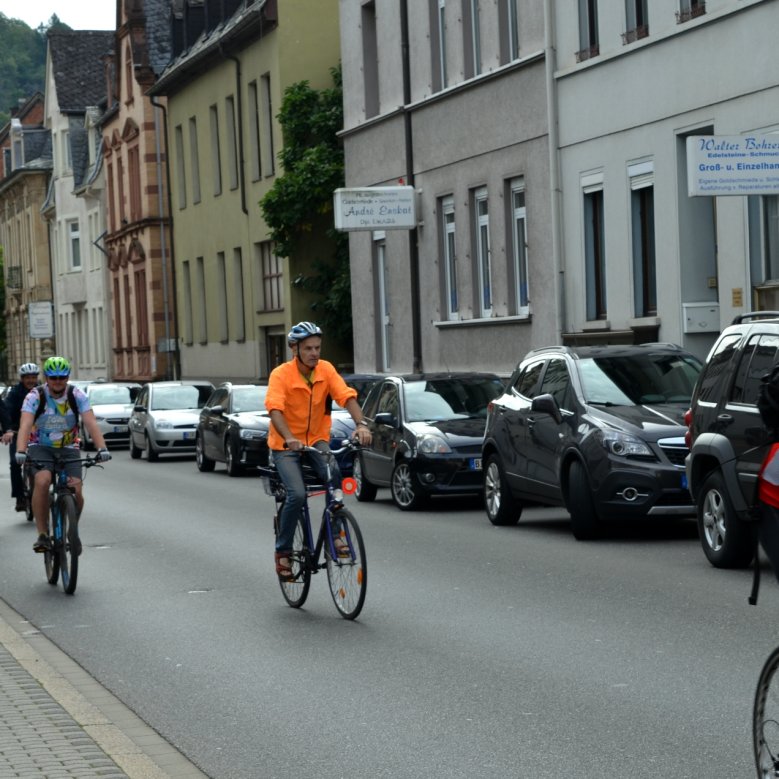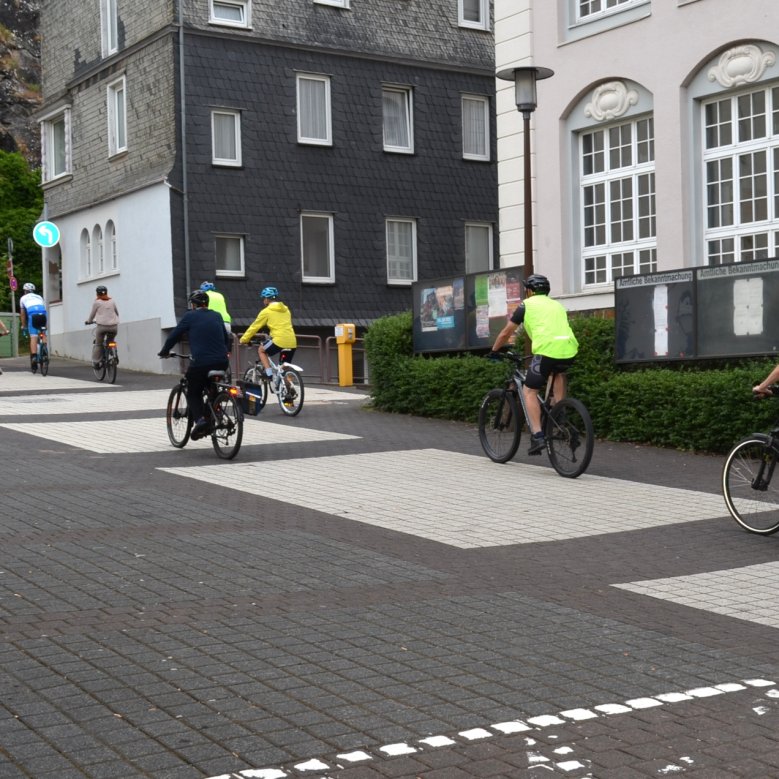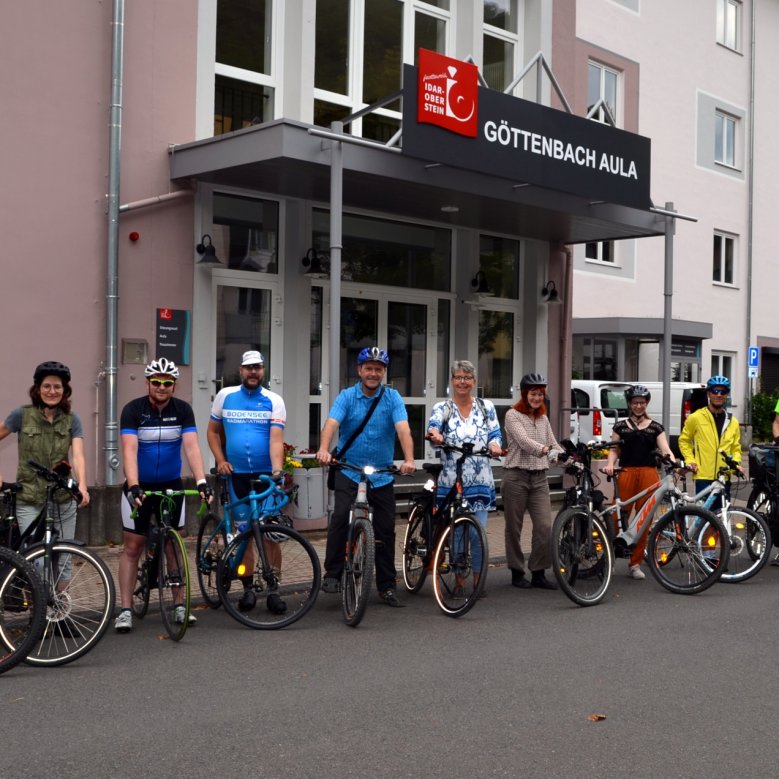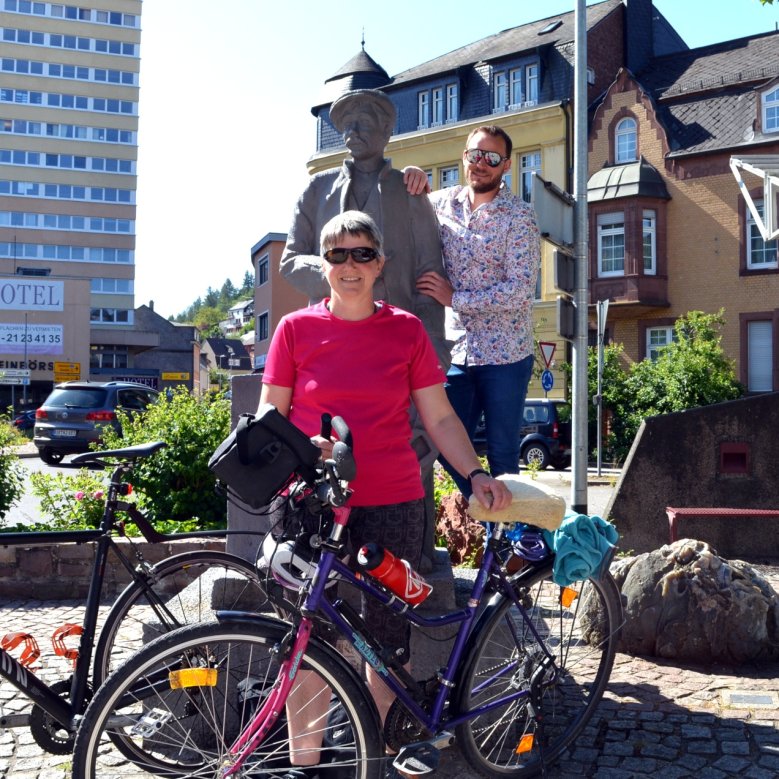Mobility
Cycling
Why cycling?
Cycling has a positive effect on your health. According to the ADFC (Allgemeiner Deutscher Fahrrad-Club), it is good for the back, heart, circulation, lungs, airways, joints and muscles, boosts fat metabolism and makes us feel good.
Every kilometer travelled by bicycle avoids 166 g of CO2 emissions. (Source: UBA, reference year 2022)
CITY CYCLING
- 2025: Save the Date - Cycle from June 2 to June 22 and collect bike kilometers :
https://www.stadtradeln.de/idar-oberstein
- 2024: 189 active cyclists, 19 teams and 42,188 kilometers cycled
- 2023: 187 active cyclists, 19 teams and 54,038 kilometers cycled
- 2022: 140 active cyclists, 11 teams and 39,466 kilometers cycled
- 2021: 103 active cyclists, 19 teams and 31,000 kilometers cycled
- 2020: 102 active cyclists, 20 teams and 30,270 kilometers cycled
(you can find more information on the results of previous years at the above Internet address in the "History" section)
 Climate Alliance
Climate Alliance City administration of Idar-Oberstein
City administration of Idar-Oberstein City administration of Idar-Oberstein
City administration of Idar-Oberstein City administration of Idar-Oberstein
City administration of Idar-Oberstein City administration of Idar-Oberstein
City administration of Idar-Oberstein City administration of Idar-Oberstein
City administration of Idar-Oberstein City administration of Idar-Oberstein
City administration of Idar-Oberstein
Cycle path concept
You can find more information on this on the MOKO wheel page
Electromobility
Why electromobility?
Vehicles with combustion engines: Better engines, exhaust technology and the use of new fuels are helping to reduce pollutant emissions from road traffic. However, the effects are more than offset by the increasing volume of traffic and the growing number of highly motorized vehicles with comparatively high fuel consumption. CO2 emissions from road traffic increased by 21% per year across the EU. Source: Federal Statistical Office as at 31.05.2023. In addition, the BMU identifies the "transport sector" as the third largest source of emissions.
Electric vehicles, powered by electricity from renewable energy sources, should avoid pollutants from fossil fuels in the long term.
Electromobility in the city administration
The vehicles in the city's and municipal utility's own fleet are predominantly powered by fossil fuels. The city can make a contribution to climate protection by gradually replacing the city's own fossil-fuel vehicles with electrically powered vehicles.
Defective service vehicles were replaced by new electrically powered vehicles:
- a small electric vehicle as a construction site vehicle for the municipal utility company, since Jan 2018
- an electric van as a postal vehicle for the city administration, since Feb 2019
- Three small electric cars as pool vehicles for the city administration, since Dec. 2019
- an electric panel van as a construction site vehicle for the municipal utilities, since July 2020

The four electrically powered vehicles and the charging infrastructure were funded with a volume of EUR 65,917 via the Special Energy and Climate Fund and the funding code 03EMI3009.
 © BMUB
© BMUB
An electrically powered small car was procured with the help of sponsorship from OIE AG.

